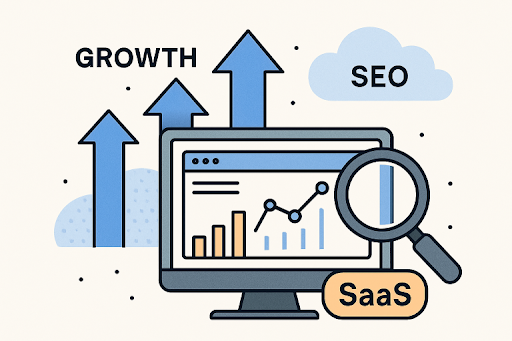In the quiet rhythm of today’s digital age, cloud computing has become more than just a buzzword it’s become a foundation for how we store, access, and manages data. Whether we realize it or not, our lives are increasingly intertwined with “the cloud,” from storing cherished memories in photo albums to running entire businesses on remote servers. Yet, like all technology, there is a gentle balance to be considered. Understanding the pros and cons of cloud computing helps us move forward with greater clarity and confidence.
Welcoming the Cloud: A Brief Introduction
At its heart, cloud computing is about accessing data and services over the internet rather than relying solely on local systems or physical devices. This technology offers a flexible approach, allowing users to tap into powerful resources without needing to invest heavily in physical infrastructure. It can feel almost magical working on a document from one device and picking it up instantly from another. But behind the scenes, there’s a lot happening. As we explore this digital environment, it becomes important to gently examine both the benefits and the challenges it presents. The pros and cons of cloud computing can shape everything from small personal decisions to large-scale business strategies.
The Brighter Side: Gentle Advantages of Cloud Computing
1. Flexibility and Ease of Access
One of the most appreciated aspects of cloud computing is its ability to adapt to different needs. Whether you’re working from home, a café, or halfway across the world, you can access your files and tools with a simple internet connection. This kind of freedom allows people and businesses to function without being tied to one location. For teams that are spread out geographically, the cloud also makes collaboration feel natural. Real-time updates, shared documents, and smooth communication can take place without disruption.
2. Cost Efficiency without the Clutter
Traditionally, managing digital operations required purchasing expensive hardware and maintaining dedicated IT departments. pros and cons of cloud computing shifts this model. Now, companies can scale their needs up or down and only pay for what they use much like a utility bill. This pay-as-you-go structure helps reduce upfront costs and minimizes waste. For small businesses or startups, this can be a lifeline, offering access to powerful tools without overwhelming budgets.
3. Automatic Updates and Reduced Maintenance
With cloud services, the burden of constant software updates or system maintenance is taken off the shoulders of users. Providers usually handle everything behind the scenes, ensuring that systems stay current with the latest security patches and features. This kind of hands-off convenience means less downtime and fewer technical headaches, allowing individuals and teams to focus more on their actual goals rather than backend worries.
4. Built-In Backup and Recovery Options
Storing data in the cloud often includes built-in backup solutions. If something goes wrong like a laptop crash or accidental deletion cloud platforms usually offer options to restore files quickly and easily. This kind of reassurance brings peace of mind. Knowing that your important documents, photos, or project files aren’t gone forever provides a layer of emotional and practical comfort.
The Other Side of the Sky: Reflecting on the Limitations
1. Dependence on Internet Connectivity
While the cloud offers remarkable accessibility, it also introduces a subtle dependency. Without a reliable internet connection, even the simplest task like opening a document or checking your calendar can feel frustratingly out of reach. This issue is especially pronounced in areas where connectivity is limited or unstable. For those users, the cloud’s full potential remains just slightly out of grasp.
2. Concerns about Privacy and Data Security
Storing information in the cloud often means entrusting it to third-party providers. Although these services usually invest heavily in security measures, no system is entirely immune to threats. Questions about who can access your data, how it’s being used, and what happens in the event of a breach can weigh heavily especially when sensitive or personal information is involved. It’s important for both individuals and businesses to understand these risks and choose providers with strong transparency and trust.
3. Potential for Downtime and Service Disruptions
Even the most robust cloud services can experience unexpected outages. When this happens, it can disrupt workflow, delay projects, or even affect customer service. While most disruptions are resolved quickly, the sudden pause can be inconvenient or even costly, depending on the context. This reminds us that no system is perfect, and having a backup plan or contingency strategy can offer a sense of control when things feel uncertain.
4. Hidden Costs and Subscription Fatigue
Although cloud computing is often praised for its affordability, costs can add up over time especially when multiple services are bundled or usage scales unexpectedly. Subscription-based pricing may start off looking economical but can grow into a complex web of monthly charges. For small organizations or solo users, keeping track of these expenses requires care and occasional reassessment to make sure everything still aligns with their actual needs.
Finding the Middle Ground: Making Thoughtful Choices
When thinking about the pros and cons of cloud computing, it’s not about choosing sides it’s about understanding your own needs, values, and goals. For some, the benefits will far outweigh the challenges. For others, a hybrid approach blending cloud services with local systems might offer the most peace of mind. It’s also helpful to revisit your setup from time to time. What worked a year ago may not suit you today. By staying open to change and aware of the possibilities, you give yourself room to grow in a digital world that’s constantly evolving.
Soft Guidance for Embracing the Cloud
Before diving into any cloud platform, here are a few gentle suggestions to guide your journey:
- Start small: Test one service before committing fully. This lets you explore its features without pressure.
- Understand the terms: Read through user agreements and privacy policies with care, even if it takes time.
- Choose trusted providers: Look for companies that value transparency, security, and customer support.
- Back up locally when needed: For extra-important files, consider keeping a local copy just in case.
Conclusion:
The journey through the cloud pros and cons doesn’t have to feel overwhelming. It’s okay to be excited about the possibilities while still being cautious about the risks. pros and cons of cloud computing here to stay, and it continues to shape the way we work, connect, and create. By exploring its gentle balance, we empower ourselves to make thoughtful decisions ones that feel aligned with our values, goals, and lifestyles. In the end, the cloud isn’t just about data. It’s about how we move through the digital world with care, curiosity, and a sense of calm confidence.











